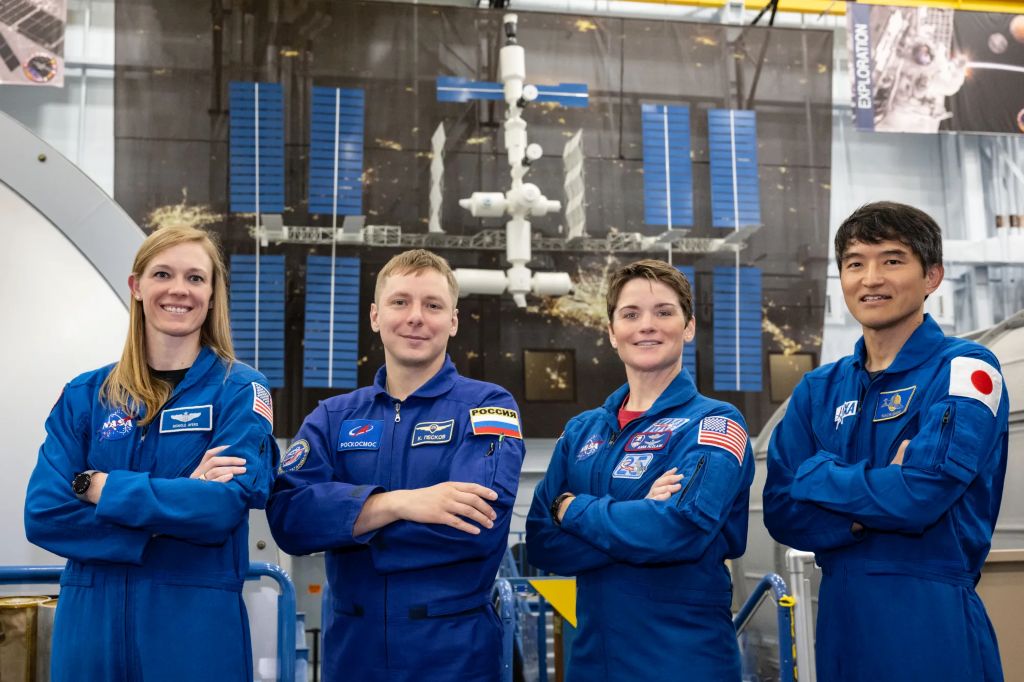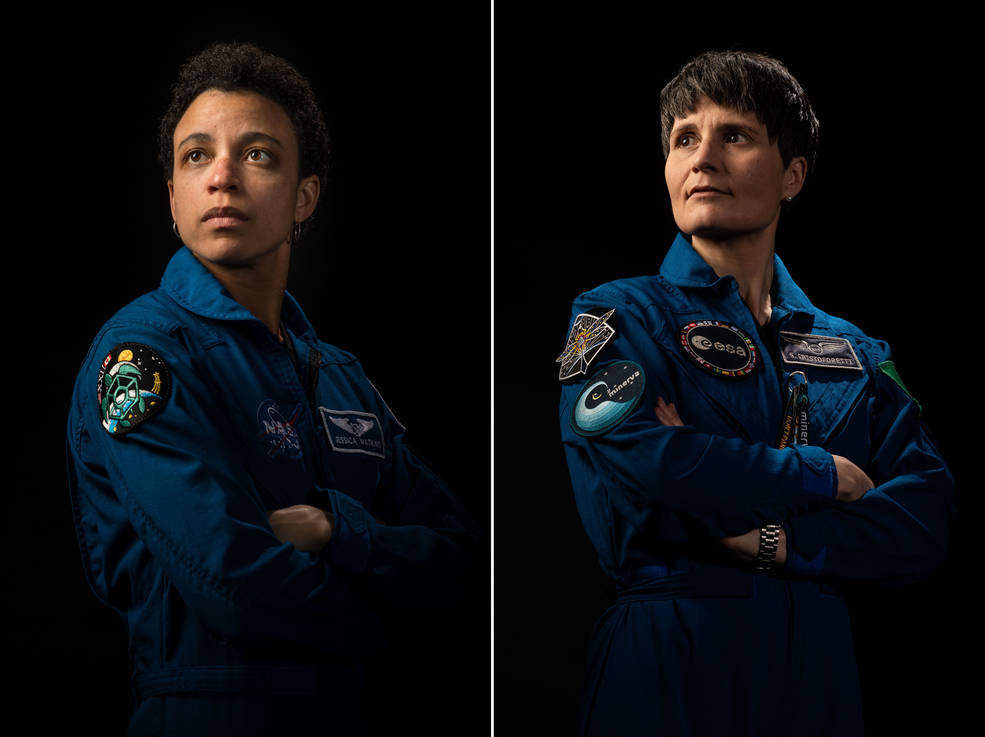Langley Celebrates Women’s History Month: The Langley ASIA-AQ Team

In honor of Women’s History Month, we caught up with the ASIA-AQ team on the other side of the Earth and asked the women from Langley about their inspirations and challenges as scientists.
The ASIA-AQ (Airborne and Satellite Investigation of Asian Air Quality) mission is an international cooperative field study designed to address local air quality challenges. ASIA-AQ will contribute to improving the integration of satellite observations with existing air quality ground monitoring and modeling efforts across Asia.
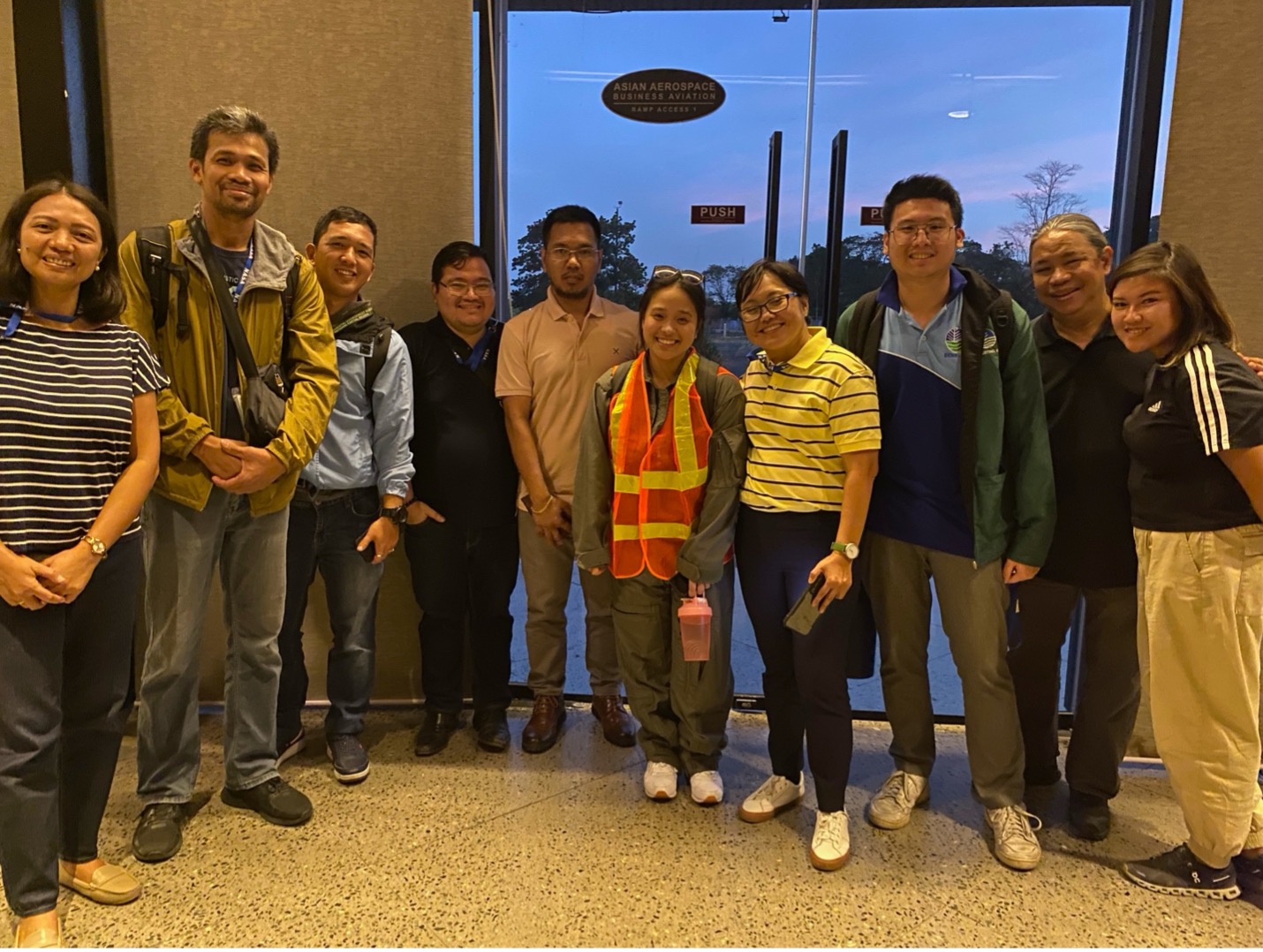
Langley’s Angelique Demetillo, center, in her flight suit after a flight in the Philippines for the ASIA-AQ mission along with mission partners from the Philippine Department of Environment and Natural Resources (DENR) and Manila Observatory.
NASA/Kevin Rohr
Mary Angelique G. Demetillo, Ph.D., NASA Post-doctoral Program Fellow and instrument operator on board Langley’s G-III aircraft, operates the GeoCAPE Airborne Spectrometer (GCAS) remote sensor.
What do you do at Langley?
I focus on using high-resolution remote-sensing measurements to study air pollution inequality in cities. Currently, I am using airborne LIDAR measurements to understand lower tropospheric ozone variability over Houston, Texas.
As a child, what did you want to do when you grew up?
I just wanted to be helpful–at first, I wanted to be a teacher and then a doctor and then a biomedical engineer. Then, I found atmospheric chemistry research and discovered I could combine the knowledge I learned in the classroom to 1) work with scientific instruments that could measure the unseen, 2) to understand the world around me, and 3) provide policy-useful information towards addressing air pollution inequality.
Are there obstacles you have had to overcome to be successful?
Hmmmm, this is a hard one. I think I was very lucky to have access to good education and food and housing security so I could focus on my studies such that any obstacles I encountered really ended up being stepping-stones in my development as a scientist. Growing up in America under immigrant parents, it was tricky navigating the reconciliation of two very different cultural and generational perspectives. The largest impact of this dichotomy was that it wasn’t common for first-generation Filipina-Americans to be anything other than nurses or in the medical field. As such, I didn’t really know being a scientist was an accessible career to me and was even actively discouraged to pursue it. But I’m glad I did, and still am, and feel incredibly lucky to be able to do great work with awesome people while navigating this pipeline.
Were you treated differently as a woman in a science field?
I may have been and didn’t recognize it since I was very shy and quiet. However, I did realize being confident in my abilities and knowledge and speaking up for myself and others were critical to participating and succeeding in male-dominated fields like physics and atmospheric science.
Who were your mentors growing up? Who are your mentors now?
I have been incredibly lucky to come across many people from whom I learned different things and looked up to in different ways. Most notably however, were my elementary school computer teacher, my 5th grade science teacher, my graduate school advisor, and my current postdoc advisor! Each of them were/are critical to developing my self-confidence as a scientist and person.
What’s the best part of your job?
It’s hard to pick! You can’t beat the work –getting to fly and work closely with the instrument/measurement teams whose data I use for my research; collaboration across cultures and expertise on field campaigns; and exercising scientific precision, accuracy, and creativity for data-driven, policy-relevant solutions is a surreal job to have. But since I’m still building my career, I would really have to say the people are the best part—from speaking with experienced scientists, mechanics, engineers, and project managers to growing alongside the next-generation atmospheric chemists as we shape our contribution to the field as individuals and cohort, makes the work even more fun and exciting.
Why does science matter to you?
Science matters to me because it served as a platform through which I could understand the world around me. As I grow more in this field, I am also learning science truly requires collaboration. Science can serve as a testbed for new solutions and innovations while bridging the gap between language, culture, and backgrounds. And with increasing interdisciplinary science, it will not only challenge our ability to connect different perspectives of information together, but also strengthen our connections to each other.
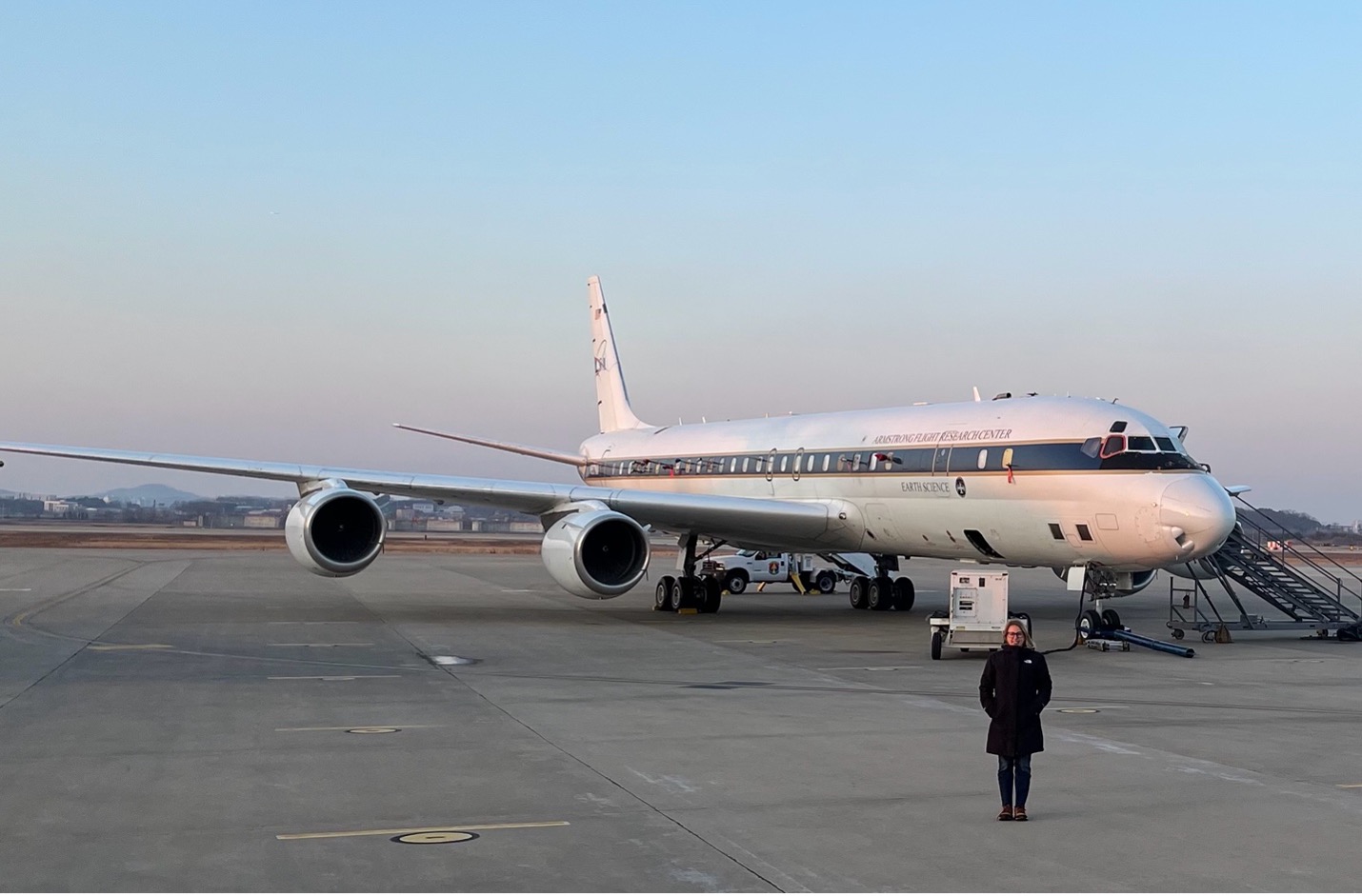
Langley’s Francesco Gallo in front of NASA Armstrong’s DC-8 aircraft in South Korea during ASIA-AQ.
NASA/Eddie Winstead
Francesco Gallo, Ph.D., research scientist, operates Langley Aerosol Research Group (LARGE) instruments on board Armstrong’s DC-8 aircraft for ASIA-AQ.
What do you do at Langley?
I do a lot of data analysis of aerosol datasets from previous and current NASA campaigns.
Are there obstacles you have had to overcome to be successful?
I’ve always been very much supported by my family and mentors. Being a foreign national has been often an obstacle. Luckily, becoming a lawful permanent resident last year has helped things improve.
Were you treated differently as a woman in a science field?
No.
What’s the best part of your job?
Thinking I can somehow support the understanding of climate change for better environmental justice.
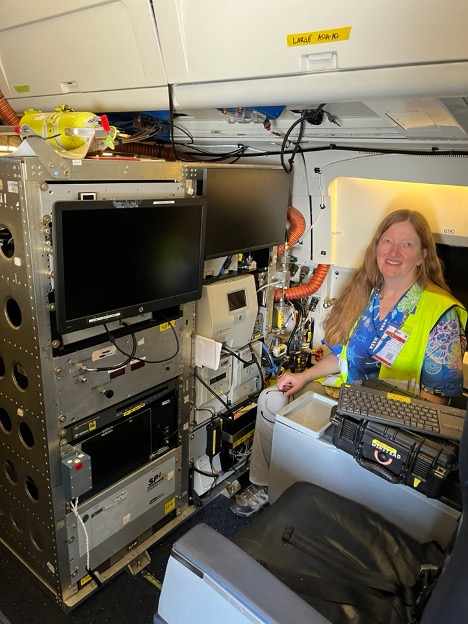
Langley’s Carolyn Jordan with the LARGE instrument panel she operates on NASA Armstrong’s DC-8 aircraft at Clark Air Base, Philippines.
NASA/Eddie Winstead
Carolyn Jordan, Ph.D., research scientist senior, is a member of the Langley Aerosol Research Group (LARGE). For ASIA-AQ, Jordan operates a rack on Armstrong’s DC-8 that measures aerosol properties and is developing a new measurement called the Spectral Aerosol Light Absorption Detector (SALAD).
What do you do at Langley?
Primarily, I am a data analyst with LARGE working up various data sets and writing papers focused on our aerosol measurements. I also work in the lab with other members of our group. We have developed two new ground-based measurement capabilities for spectral extinction (SpEx) and absorption. We are now transitioning those methods to enable them to be used from airborne platforms.
As a child, what did you want to do when you grew up?
I wanted to be an astronaut and even wrote to NASA as a young teenager (13-14 or so) to ask what one had to do to become one. They didn’t tell me, but they did send me a lovely photograph of Saturn!
Are there obstacles you have had to overcome to be successful?
I grew up in a tiny farm town in rural Wisconsin, but I was very fortunate to be surrounded by people who didn’t think it was crazy to want to be an astronaut. I was also extremely fortunate to have excellent teachers in high school and college who were supportive and helpful when I questioned whether I could manage the material as a physics major. I was lucky my obstacles were few, and I have been very fortunate in the opportunities that came my way.
Were you treated differently as a woman in a science field?
Sometimes. The important thing is even in the 1980s (my college, grad school, and early career years), those who did so were considered to be out of line, so I never paid much attention to those who treated me as if I didn’t belong.
Who were your mentors growing up? Who are your mentors now?
My high school teachers Dr. Neil C. Goodspeed, Mrs. Peggy Johnson, Mr. Ted Moskonas, and Ms. Pam Wilson, my college professors Dr. Dino Zei, Dr. Wayne Broshar, and Dr. Mary Williams-Norton. At this point in my career I don’t have mentors so much as excellent colleagues from whom I continue to learn a great deal.
What’s the best part of your job?
I have great colleagues and interesting research. Even after all these years, I still have a great time doing the work that I do. The most interesting thing for me is to look at the data. One always finds something interesting and often something unexpected. Working to understand what is there is the most fun for me.
Why does science matter to you?
Science is how we learn things. It’s how we identify solutions to problems. But there is also something to be said for expanding our knowledge of the universe we live in for its own sake.
What’s next?
I don’t know, we’ll see where the data tells us to look.
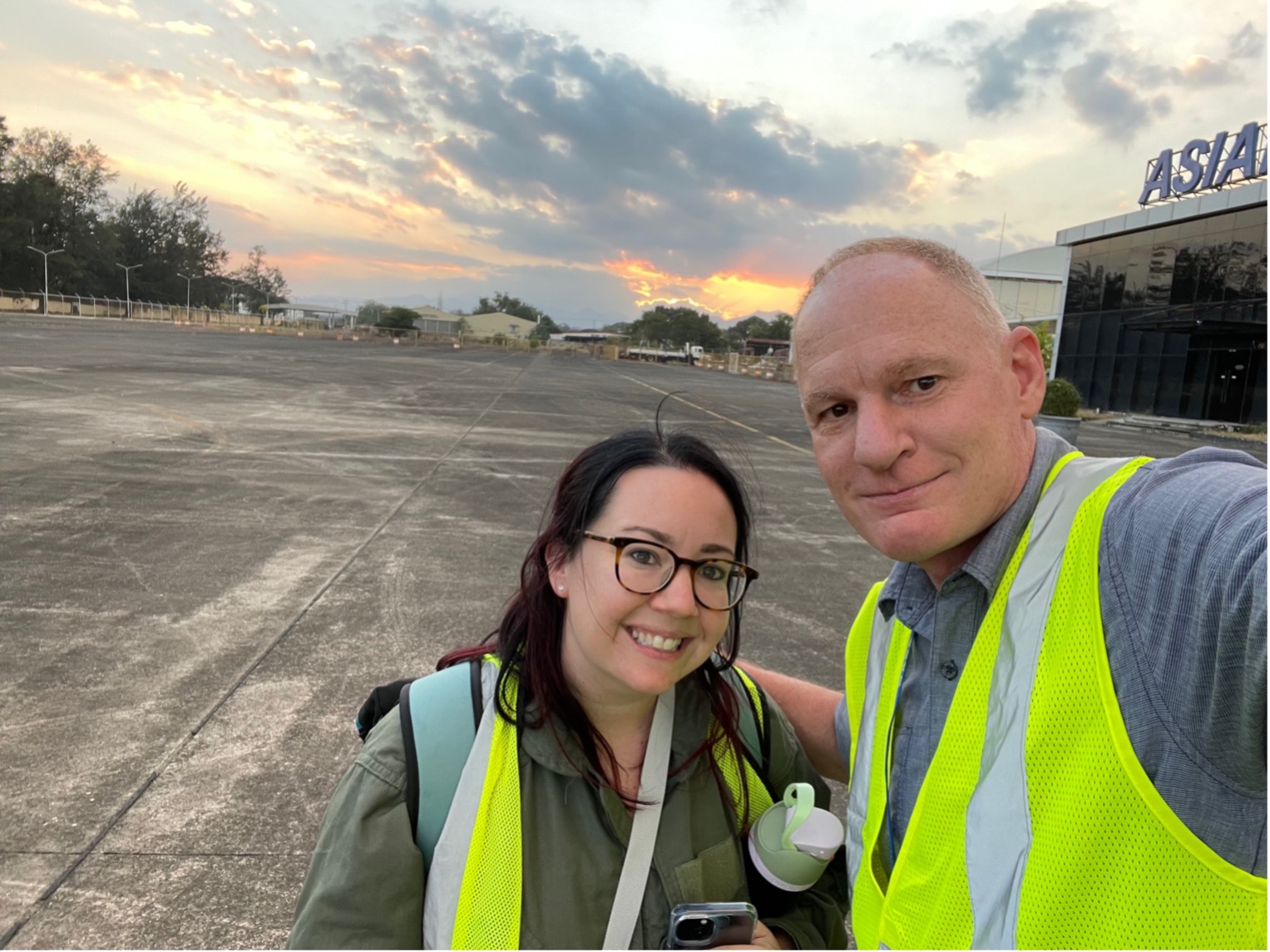
Langley’s Laura Judd and Barry Lefer from NASA HQ after a science flight at Clark Air Base, Philippines.
NASA/Barry Lefer
Laura Judd, Ph.D., research physical scientist and platform scientist for Langley’s G-III aircraft on ASIA-AQ.
What do you do on the ASIA-AQ mission?
I lead science flight planning and execution with our remote sensing payload and instrument and aircraft teams. In the field, I spend my days working with the forecasting team to identify flight opportunities and real-time decision-making during science flights. I also continue my role I did as an instrument team member, which includes data processing and analysis with high resolution maps of nitrogen dioxide and formaldehyde from one of our satellite proxy instruments.
What do you do at Langley?
I think my job fits largely three roles: (1) I contribute to planning of upcoming field studies This year it’s been STAQS (Synergistic TEMPO Air Quality Science) and ASIA-AQ. (2) I use data collected from those field studies to research spatial and temporal changes in pollution over major cities from satellites, aircraft, and ground-based data. This also includes validating satellite products and collaborating with other researchers using our data for topics such as model evaluation and air quality event analysis, etc. (3) I also am an associate program manager for the Health and Air Quality area in Earth Action. This comes with managing a portfolio of air quality projects that are integrating NASA datasets within decision making frameworks for stakeholders in air quality management and the public health sector.
As a child, what did you want to do when you grew up?
I always wanted to study the weather. This came from growing up in Nebraska and constantly being bombarded with dramatic shifts in day-to-day weather, including severe storms. This is typical of most meteorology colleagues I have met. Going in the air pollution direction didn’t come until I graduated with my degree in meteorology through a NASA internship, but the weather is one of three major factors in why air pollution events unfold like they do from region-to-region (the other two being emissions and chemistry).
Were you treated differently as a woman in a science field?
I have definitely encountered a subset of people who have not given me the respect due to being a woman throughout my career. There are definitely instances where I am the only woman around, too, especially during field work. Luckily, I have been extremely fortunate to be overwhelmed with colleagues and mentors who do not treat me differently because I am a woman but rather see my potential and together make a good team.
Who were your mentors growing up? Who are your mentors now?
Barry Lefer [NASA’s Tropospheric Composition Program Manager] has been a huge advocate for me and many other women as scientists. While statistically there are less women in STEM, there is no way to balance it out in the future without advocates like him. He was my first mentor in doing airborne science as a student and continues to be at NASA.
What’s the best part of your job?
The best part of my job is being on the forefront of new science. I get to work with some of the top experts in our field in the world and a lot of them I get to now call my friends. We are all learning together to come up with new ways to improve our understanding of air quality with the hope of seeing cleaner air in the future. You also can’t beat an office view from 28,000 feet during these sporadic missions!
Why does science matter to you?
The science we are doing directly affects our quality of life, especially for the millions living with poor air quality. I am also encouraged. I am early in my career and have already seen positive changes in air quality happen in some regions. I find that encouraging to keep going.
What’s next?
For me, it’s to keep pushing bounds on what we can learn from combining new satellite, airborne, and ground-based air quality data.
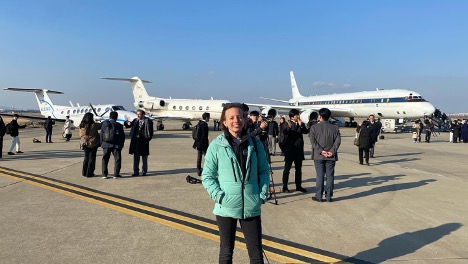
Langley’s Katie Travis on the flight line at Osan Airbase, South Korea. NASA’s DC-8 and G-III aircraft can be seen behind her along with a partner aircraft from the Korea Meteorological Administration.
NASA/Francesca Gallo
Katie Travis, Ph.D., research scientist, compares model forecast simulations with local air quality monitoring sites on the ASIA-AQ mission. Travis also performs quick evaluations of the aircraft data as it becomes available after each flight.
What do you do at Langley?
I work to put together all parts of the integrated observing system for air quality by interpreting satellite, aircraft, and ground-based data with models to improve our understanding of surface air quality and atmospheric composition.
As a child, what did you want to do when you grew up?
A journalist!
Are there obstacles you have had overcome to be successful?
The main obstacle I have had to overcome is balancing having children with the demands of a scientific career.
Were you treated differently as a woman in a science field?
That is a difficult question to answer. However, I can say that getting my bachelor’s degree in engineering from a women’s college (Smith College) gave me a wonderful start to working in science in a very supportive environment.
Who were your mentors growing up? Who are your mentors now?
I am very grateful for the wonderful community in the field of atmospheric chemistry and at NASA. It was a professor at Smith College, Paul Voss, who introduced me to air quality. Now I am lucky to be part of the IMPAQT group (Integrating Multiple Perspectives of Air Quality Team) at NASA and be mentored by senior scientists as well as work with colleagues with a range of expertise in both air pollution and policy.
What’s the best part of your job?
The best part of my job is getting to learn something new every day and getting to explore questions about the world that I think are important.
Why does science matter to you?
Studying environmental issues, to me, means working to understand the impact human activities have on our environment so that we can protect it for future generations.
What’s next?
More science.
For more information on the ASIA-AQ mission and the Science Directorate at Langley:
https://www-air.larc.nasa.gov/missions/asia-aq/index.html
https://science.larc.nasa.gov/
https://science-data.larc.nasa.gov/large/

